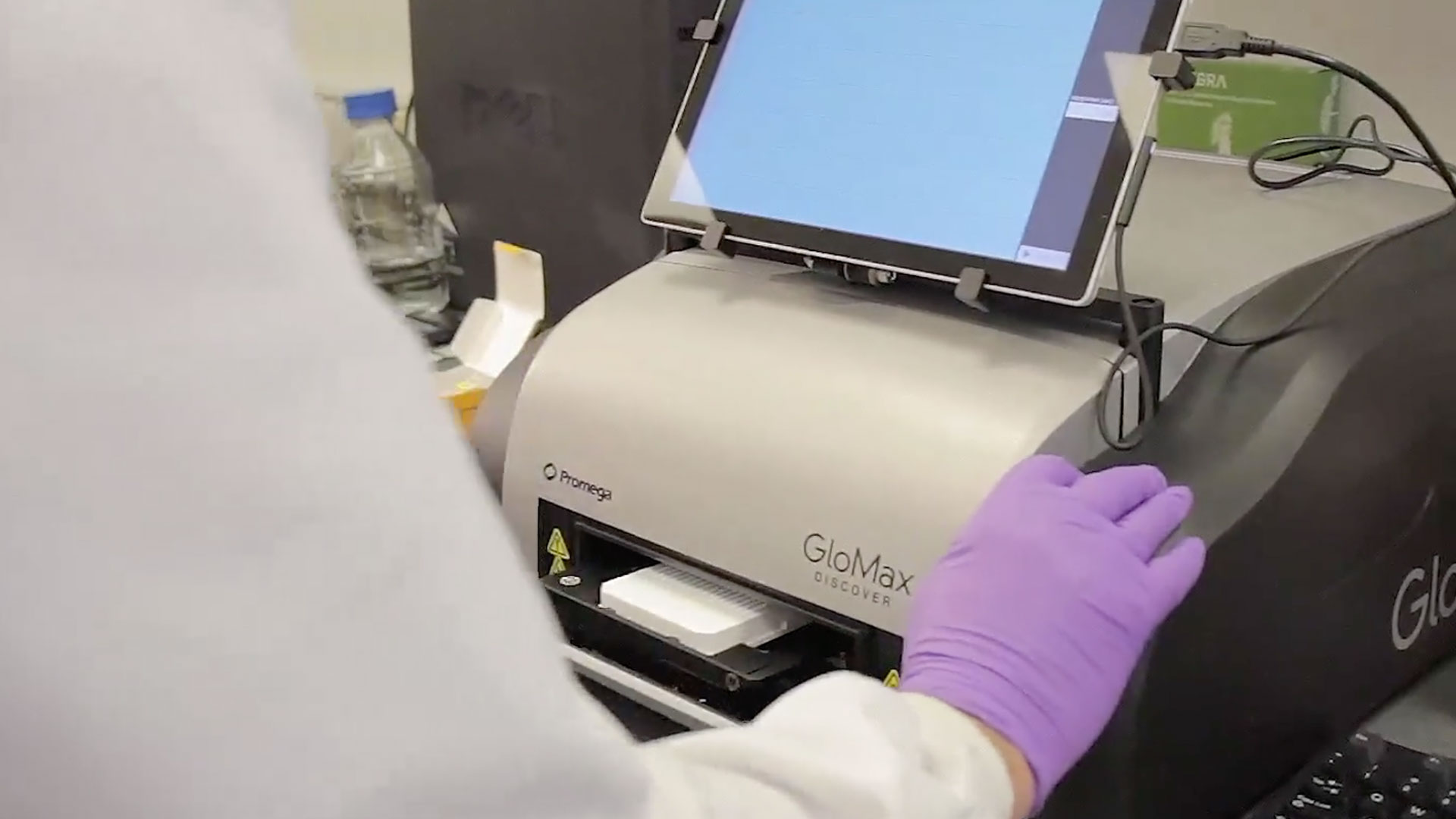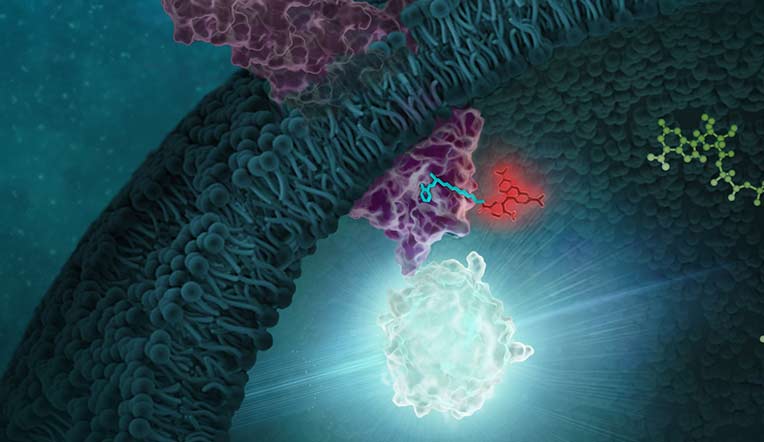Target Engagement
Target engagement (TE) assays measure compound binding at select target proteins in intact cells. These assays also provide information about compound-target residence time and can be used to screen a panel of inhibitors to compare IC50 values.
The NanoBRET® Target Engagement Assay
The NanoBRET® Target Engagement Assays are live-cell binding assays that use an energy transfer technique to measure molecular proximity. The apparent affinity of test compounds is measured by competitive displacement of the NanoBRET® tracer, which is reversibly bound to a NanoLuc® luciferase-target protein fusion in cells. Thus, when a competing compound is introduced, there is a dose-dependent decrease in the energy-transfer-based NanoBRET® signal, which means you can quantitate the intracellular affinity between the test compound and its target protein.

CRO Case Study
Learn how Aurelia Bioscience is using NanoBRET® technology to speed up their drug discovery workflow.

Target Engagement Resources

Studying Drug Target Engagement with BRET
An overview of using BRET technology for target engagement in an easy-to-follow format.

Live-Cell Quantification of Target Engagement and Compound Residence Time Using a Novel BRET Assay
A novel BRET-based target engagement method that significantly increases the type of data from intra-cellular kinase and epigenetic targets in a live-cell context.

Finding the Nexus: A New Technique for Studying Kinase Target Engagement in Live Cells
Learn how to analyze inhibitor occupancy in living cells without disturbing the intracellular equilibrium or the cell membrane.